Articles
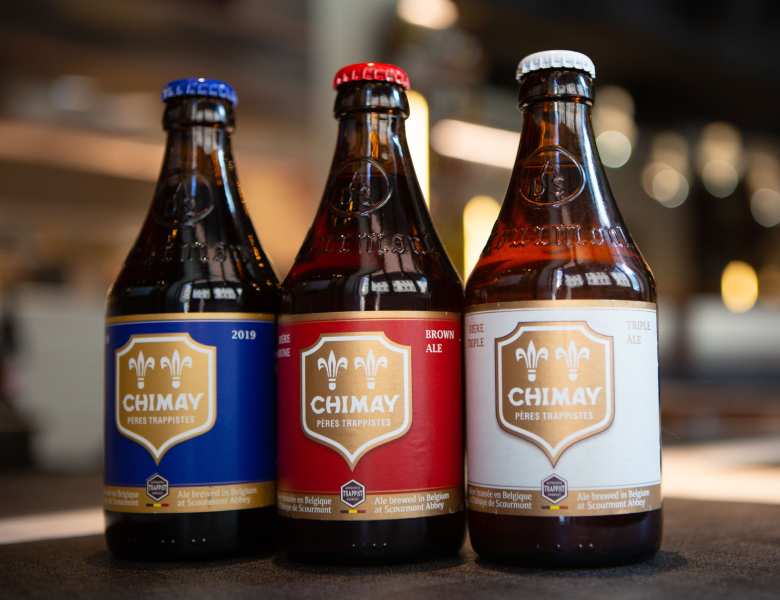
Trappist beer: a legend to be tasted
Every style of Belgian beer has its own twist, but there is a trend worth talking about separately. And it's not even the fact that it was invented by monks - other beers can also boast such a biography - it is the only beverage whose production is still controlled by ancient abbeys. Meet Trappist beer! History of Creation The Trappists were descended from disillusioned Cistercians: in 1098 the monks of the Benedictine abbey at Molem, dissatisfied with the order in the community, founded their own monastery. At first, everything went smoothly - the charter based on the precepts of St. Benedict was observed, the monks worked hard and maintained strict ascesis. But over time, discipline in the monasteries began to lag, and the situation might have become critical had it not been for the Abbey of La Trampe, which introduced a series of serious reforms. Thus came the Order of Cistercians of strict observance, whose members were called Trappists. The Trappist monks did not start brewing beer by chance - the quality of water in those days left much to be desired, so the weak alcohol, purified from harmful bacteria during fermentation, was used as the main beverage. Trappists were famous for their hospitality and mercy. The production grew, the technology of brewing beer improved and finally the monks found their unique recipe. They used special yeasts to make the drink and left it to ferment in bottles. Some abbeys additionally added sugar to increase the strength of the beverage. But Belgian monk beer only really took off at the beginning of the twentieth century, when the sale of hard liquor was prohibited in drinking establishments. In order to maintain their brand, bar owners began to buy beers that could replace liqueurs. The strength of Trappist beer was unmatched, and the drink immediately gained wide popularity. Eventually it played a cruel joke on the monks - the brand got a lot of imitators. But in the end, justice prevailed - the court, to which the Trappists appealed, ruled in their favor. Unique taste Today only 13 certified breweries make "monastic" beer. All of them are attached to abbeys, and the producers are obliged to fulfill a number of conditions, for example, to send part of the profits to the monastery and charity. The distinctive features of the Belgian monastic beer are a special thick taste, buttery-fruity aroma and high strength, which can be felt even physically after just a few sips. It is also of a consistently high quality, which is still guaranteed today by the strict control of production. To taste a real Trappist beer, it is important to choose the right beer restaurant where you know firsthand what tradition is all about. The Lambic Brasserie chain is just such a place: we offer the best Belgian beer and know how to serve it properly. Come on!
01 March 2021
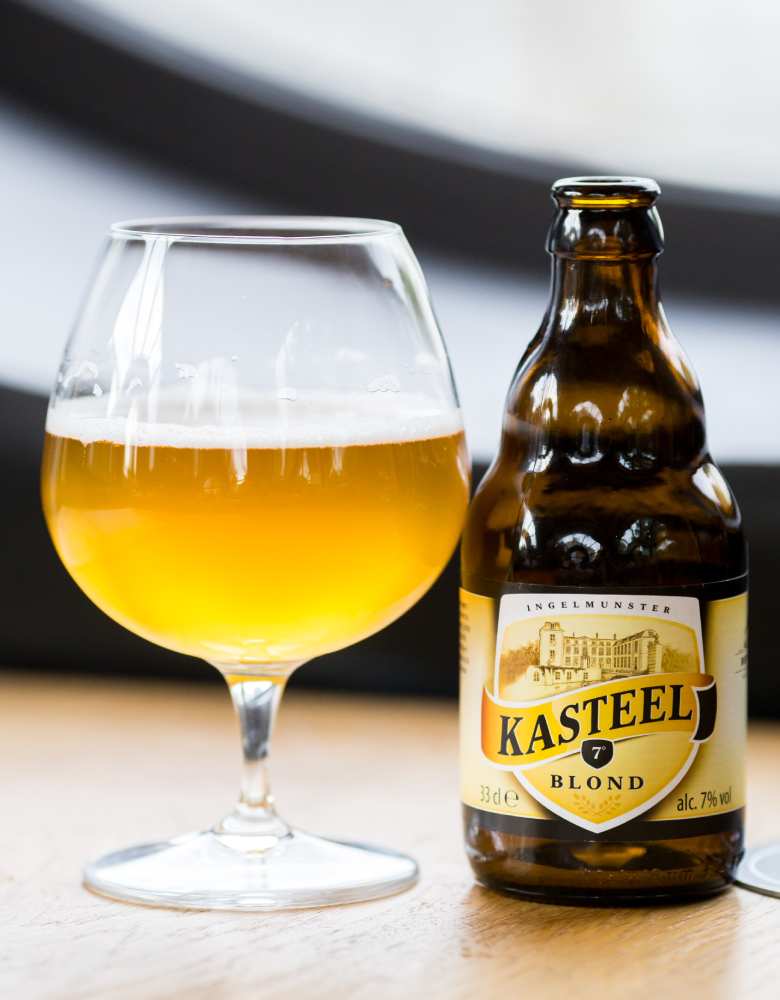
Elle: the complete history of the most famous style
Even those who do not know about beer have probably heard about ale at least once. And many are sure that they are synonymous. In fact, they are not: ale, like lager, like lambic, is just one style. So why is it more popular than all the others? Back to the Past Beer resembling ale was first brewed before our era. But a beverage that meets the characteristics of this trend appeared only in the 15th century in England. Like all other beers of that time, it was produced out of necessity: local water was practically unusable and milk spoiled too quickly. Ale, on the contrary, was purified from harmful bacteria during fermentation and could be preserved for a long time. Characteristic features that distinguish ale from traditional beer appeared later. First, hops were brought to England, and some beer was brewed on the basis of this ingredient, while ale remained true to tradition - it was still made on the basis of spices and herbs and was not pasteurized or filtered. Later on, another nuance was added: only those varieties that were produced at a temperature of 15-24°C by top fermentation were considered ale. The yeast in the finished product did not sink to the bottom, as in the production of other varieties, but remained at the top in the form of a foamy cap. The fermentation process manifested higher alcohols and esters, which subsequently had a significant impact on the taste. It was also a prerequisite for brewing ale - the finished beer was left to infuse in a cool place for a while. On average, the entire production process took no more than a few weeks, exceptionally - a couple of months in case of long brews. Types of ale This family includes many popular varieties: stout, porter, wheat beer, IPA, pale, Irish, Belgian, and Trappist ale, which is considered truly legendary. The thing is that only 13 breweries have the right to brew it; they have to be attached to the abbeys and meet a number of conditions for brewing and selling, for example, they have to donate part of the profits to charity. It makes no sense to talk about the particular taste of ale - each variety has unique characteristics. But they all have one thing in common - high density, for which ale is called "liquid bread". It is believed that in terms of calories a glass of this beer can replace a portion of this product. The best way to drink this beer is slightly cooled - about 12-18 degrees. Beer goes perfectly with different snacks, including cheese and fruit. Want to try the best Belgian ale? Come to the Lambic beer restaurant - we have the best brews!
01 March 2021
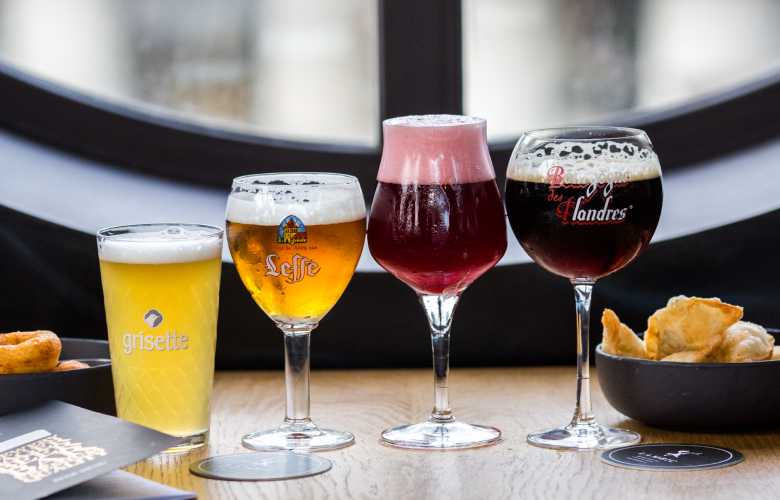
Myths about beer: what exactly you should not believe
Any Belgian will confirm that beer should not be drunk icy - the lower the temperature, the harder the taste and aroma unfolds. But in our country the culture of drinking beer has not yet reached this level, which means that there are still many misconceptions and myths associated with the favorite drink. Which of them definitely can not be believed? About temperature The opinion that cold beer tastes better was born at a time when the choice of beverages was very sparse. Beer was heavily chilled in order to hide flaws in taste. Nowadays there's no such a need - if a beer is of high quality, it should be consumed at a temperature offered by the producer. About the composition They say that they add preservatives to beer and alcohol to strong beer, make it from powder, and so on. These are all misconceptions. It is not profitable to add alcohol to a drink because it must first be produced from some raw material, and there is no point in arguing about artificial ingredients - all breweries produce beer using the same technologies, and only the quality of the raw material can influence the quality of the finished drink. About authenticity Many uninformed aficionados are convinced that beer is just water, hops and malt. Belgian producers are ready to argue with them: there are internationally recognized brews that are made without one or even two "basic" ingredients, but, for example, with a mixture of herbs and spices in the composition. About the effects on the body It is believed that beer makes people fat, but in reality it is not - it is a fairly low-calorie product. But if you drink it too much or combine it with fatty snacks, you can easily exceed the required caloric content. About appetizers It is thought that beer has to be accompanied by certain snacks, like salted fish or chips. That's not true: good beer often doesn't need an accompaniment at all, and if it is consumed in tandem, it is usually with more refined dishes, from noble cheeses to seafood and fruit. Usually it depends on the variety - each one has its own unique pairing. About storage times Many people believe that a good beer is one that is stored for no more than three days. This is a myth: beer itself cannot be a fresh product because it has undergone the fermentation process, which means that it can be stored for the entire shelf life prescribed by the manufacturer. About beer restaurants It is believed that a good beer restaurant can be found only in the homeland of the famous frothy drinks - that is, not in ossia. This is a major myth: in the Moscow brasserie chain Lambic you can try original Belgian beer, which will be properly served and accompanied by the best snacks. Come - we'll prove it in practice!
01 March 2021

Blanche de Bruxelles with a boy on the label: two symbols in one bottle
If you ask any passerby what could be considered a symbol of Belgium, you will most likely be told two things: beer and a sculpture of a boy peeing. Blanche de Bruxelles is a combination of both: it is a traditional Belgian beer, famous all over the world, with the famous statue on the label. All in all, it is a perfect souvenir that also has a rich history. But first things first. How it all began The first Belgian beer Blanche de Bruxelles was brewed back in the XIV century. It was made by Flanders monks, and they approached the production in a creative way - instead of hops they used gruyte - a special mix of spices and herbs. The beer existed for several centuries and then yielded to lagers because they were easier to produce and therefore were cheaper. The brewer Pierre Celis didn't let the drink go to waste. In the late eighties he recreated the old technology and set up production, and the drink suddenly caught the taste of modern Belgians. The name did not appear immediately, as well as the famous "appearance", but in time the beer with a boy on the label became exactly as we know it now. Exploding First of all, blanche differs from the classic lager in the absence of malt, instead of which brewers use wheat. Hops are not always present; they are replaced by a mixture of spices - orange peel, curacao, coriander - just like many centuries ago. The second distinctive feature is the high carbonation. The fact is that Belgian Blanche De Bruxelles beers are bottled with yeast sludge. Simply put, they are left to ferment in the finished container, at the expense of which the drink is saturated with carbon dioxide. Traditional blanc is produced by Lefebvre brewery, but every day there are more and more craftsmen who risk to repeat the famous drink. And some are even experimenting, creating other, darker varieties based on it. The taste of the original Blanche de Bruxelles beer is very mild, without the traditional hop bitterness, with notes of citrus, vanilla and honey. It is also famous for its long pleasant aftertaste, so it can be enjoyed even without snacks. For Belgian beer "with a peeing boy" to reach its peak, it is chilled to 5-10 degrees and served in tall glasses. True, there is another form of serving - in wooden mugs, and necessarily an even number. Tradition - you can't argue with it! Want to taste the symbol of Belgium? Come to the beer restaurants of the Lambic chain - we have only original beer from the best Belgian producers, the right serving and all the necessary conditions for a pleasant meeting with your favorite drink!
01 March 2021
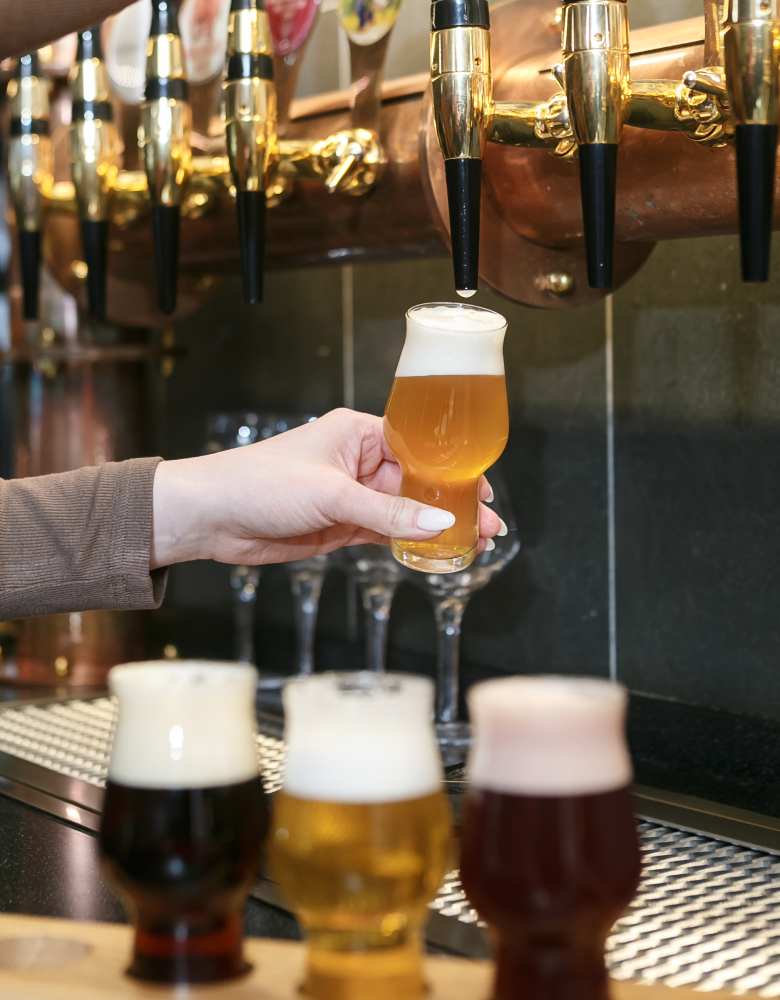
Draft beer and its peculiarities: what you need to know not to lose in taste
Every day beer is becoming more and more popular in our country, and this cannot but affect the supply. Whereas previously you could only buy beer in bottles, and a single variety was poured into mugs, today, with the advent of numerous bars and craft breweries, the selection of beers on tap has become much greater. And sometimes it is as large as, or even larger than, the bottled menu. Does this way of serving beer have any peculiarities? Myths and Truth Many uninformed beer drinkers are convinced that even if you take the same beer, draft beer will taste different from bottled beer. Some people think that bottled beer is better, others - on the contrary, because in bars and restaurants it is allegedly diluted, but the essence does not change. In fact, both are wrong: there is no difference in taste. It is the same drink, packaged in different containers - a bottle, can or keg. Taste can be affected by the unscrupulousness of the seller - if the beer is bottled or stored improperly, it can affect the product. For example, the bottling structure is not clean enough, beer is not stored in a specially equipped room, but under the bar, and so on. Also, the taste can be affected by low traffic in the bar - beer that stays on tap for weeks can lose its flavor qualities. Therefore, it is important to choose a proven beer restaurant - and then the draft beer will definitely not differ in taste from the bottled beer. Another myth associated with draft beer is that it is fresher than bottled beer. We're used to the idea that draft and bottled beer is always better than boxed and bottled beer. But this is also a misconception: beer in kegs has a shelf life of its own. For example, Belgian draft beer usually "lives" from 6 months to a year. Truly fresh can be called only that drink, which hit the table a few days after production. All other variants in terms of freshness will not differ from the product in bottles. If you are visiting a beer restaurant for the first time, it is better not to take the risk - order light varieties that are not distinguished by a complex rich taste. Bottled beer is more difficult to "spoil," so it is better to choose it for tasting exquisite drinks. On the contrary, if a place inspires confidence, like the Lambic brasserie chain, you can experiment. The advantage of draught beer is that you can order any portion, even a set of the smallest volume glasses, and get acquainted with a large number of varieties in one visit.
01 March 2021
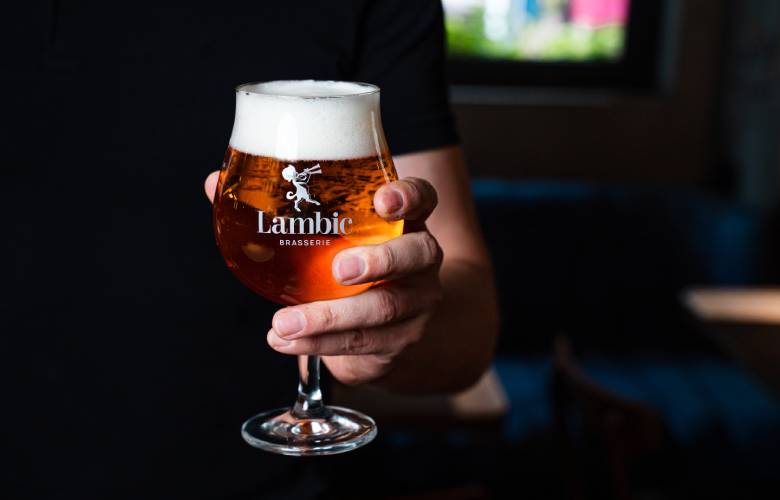
Lambic: beer for real connoisseurs
The world of beer lovers is divided into two camps: some believe that there is no better beer than lambic, others are never ready to try it again. It's all due to a specific taste, which appears due to a special production technology. What is it all about? The secrets of making Lambic is a generalized name for a whole family of foamy drinks that are produced by spontaneous fermentation. The mash of unfermented wheat and barley malt is placed in an open vat and left to ferment in this form. Yeast is not used in this fermentation, as it is carried out by micro-organisms on the walls of the vessel and in the environment. They get into the ready mixture and cause fermentation - usually this process lasts no more than a week. But there is one thing: not all wild bacteria are good for making lambic, only the ones from the Senna Valley. That's where the special microflora has developed, which ultimately gives the product its unique flavor. Experts love lambic for its uniqueness-as nature is impossible to fully control, the proportion of microorganisms that cause fermentation may vary from batch to batch. This means that each brewed batch of beer will be at least slightly different from the previous one. But you should not expect any unpleasant surprises: despite the "wild" brewing process, brewers control it thoroughly at all stages. Only certain bacteria affect wort, which gives the finished product a characteristic taste: tart and sour, without obvious bitterness, with recognizable aroma notes - old leather, wet hay, horse blanket, which are in harmony with the smell of fresh fruit, wine vinegar and freshly baked pie. What is it? The lambic family varieties range from dry gueuze to faro, which has caramelized sugar added to it. Some varieties may also include fruits and berries. The most popular variety is kriek, made with the addition of fresh cherries with a bone, which gives the drink a unique fruit and nut flavor. Also lambics can be raspberry, peach, strawberry, and currant - if the taste of the traditional drink seems too specific, fruits and berries will help smooth it out. Even if the first acquaintance with lambic is not a success, it is worth trying it again, because it is like a cheese with a noble mold, which does not reveal all the richness of its flavor right away. It is important to have the right serving and the right appetizer - then you have a chance to join the army of connoisseurs of this unique drink once and for all. Come to Lambic Beer Restaurant - we will choose the right kind of beer for you and provide all the necessary conditions for you to get maximum enjoyment!
01 March 2021
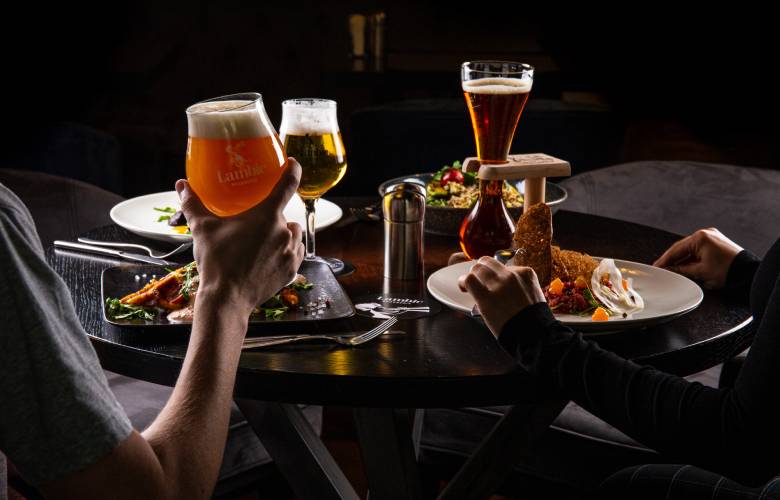
Belgian beer that everyone should try
When we say Belgium, we mean beer, and this is not an exaggeration: the foamy drink is really one of the main symbols of the country. And its quality is recognized even on an international level: in 2016, UNESCO included Belgian beer in the list of cultural heritage of mankind. Belgium is the birthplace of the world famous, and sometimes even legendary, styles of beer: Trappist, Blanche, Lambic. Each of them has dozens of varieties, which, although they have a common character, still differ markedly in taste. It's up to everyone to decide which one they prefer, but we offer a little guide for those who are just starting to get acquainted with Belgian beer heritage. Westmalle Trappist Tripel If you are ever asked to describe Belgium with just one drink, choose Westmalle Tripel. First of all, it is a Trappist beer, which means that it is already unique: it is brewed in only 13 certified breweries, which are located in real Catholic monasteries. Secondly, it is also a blanc - a white ale, a special kind of beer with a distinctive flavor. This particular variety has a strength of 9.5%, a mild fruity taste and an attractive "appearance" - a white-gold color and a dense foamy cap. A couple of decades ago it was voted "the best beer in the world", and since then Westmalle Tripel has only strengthened its position! Lindemans Kriek This lambic, though it is more of a variation of the original line, is for some reason particularly loved by connoisseurs around the world. This Belgian beer is made by spontaneous fermentation - microorganisms from the air get into the open vat with the wort and provoke the fermentation process. It differs from the usual lambic in the nuances of production - before the filtration they add cherry juice to it as well. It is ideal for those who can't like other types of this style because of the excessive acidity - the berries in the composition make it sweeter. Rodenbach Grand Cru Rodenbach Grand Cru has a really complex composition - beers of different ages are mixed, bacteria of different strains are added, in general, it's real magic. But the result is worth it - the soft taste with distinct cherry and plum notes (with the complete absence of fruit in the composition) will not leave indifferent even the most sophisticated connoisseurs. Dubuisson Bush Caractere The character is really felt in everything: from the strength (as much as 12%) to the nuances of the production. he Dubuisson Bush Caractere recipe has been kept a top secret for many years, but we know that the water for it is extracted from the sources in the cellars of the brewery, and the unique yeast and exclusive malt are used for brewing it. The taste is worth it: mild, with a perfect balance between bitterness and sweetness. It is impossible not to fall in love! If you're not going to visit Belgium yet, we invite you to the Lambic beer restaurant - here you can taste all the above-mentioned brands and hundreds of others, traditional and original. And surely - with the best appetizer, which will accentuate the noble taste of the drinks. We are waiting for you!
01 March 2021

What appetizers will go with ale: looking for the right combinations
While the lager is a universal, because it goes with both gourmet dishes and the simplest snacks, the ale always requires a special attitude. It's all about the complex rich flavor, for which it is appreciated by many fans all over the world. Bouquet of ale unfolds only at room temperature, so it is categorically not recommended to serve it much chilled. The same goes for the hors d'oeuvres, which, if not properly chosen, may drown out the taste of the drink. And on the contrary, with a competent accompaniment it is possible to emphasize even the most imperceptible flavor nuances. What to combine it with? First of all, it depends on the variety. Here are some general tips: — Amber ales go with most dishes in principle, even soups, the only thing is that you should not mix them with sweet snacks.— Light and golden varieties reveal themselves perfectly in combination with spicy dishes. It can be Thai, Indian, Mexican cuisine - it depends on preferences.— Dark ale will be in perfect harmony with chicken dishes, game, sausages, hamburgers. It's also a perfect pairing for desserts, like chocolate, cheesecake, ice cream, and so on. More specifically, there are even more interesting flavor combinations to be found. For example, Belgian wheat ale can be paired with soft cheese, salads with citrus dressing, and other light dishes. You can also play on contrasts - for example, pair fish marinated in lemon or lime juice. American wheat ale is better mixed with seafood, standard pale ale with smoked meats, Indian ale with curry or original desserts like fried ice cream. White and cream ales are a great choice for spicy food lovers: they are perfect with chili, spicy snacks and spicy dishes. Brown ales are the perfect accompaniment to meats, such as pork or smoked sausages, chicken marinated in a variety of sauces and herbs. If you're not planning a full meal, you can choose something neutral, like nuts. They go well with any kind of ale, as long as they are not too salty and without additives. Try a delicious ale in combination with properly chosen dishes at Brasserie. At any of our beer restaurants you can find a huge selection of beer, from simple to refined sorts, from strong to non-alcoholic drinks, as well as a big menu of various snacks. We guarantee the best combinations, cozy atmosphere and maximum pleasure of taste!
28 March 2021
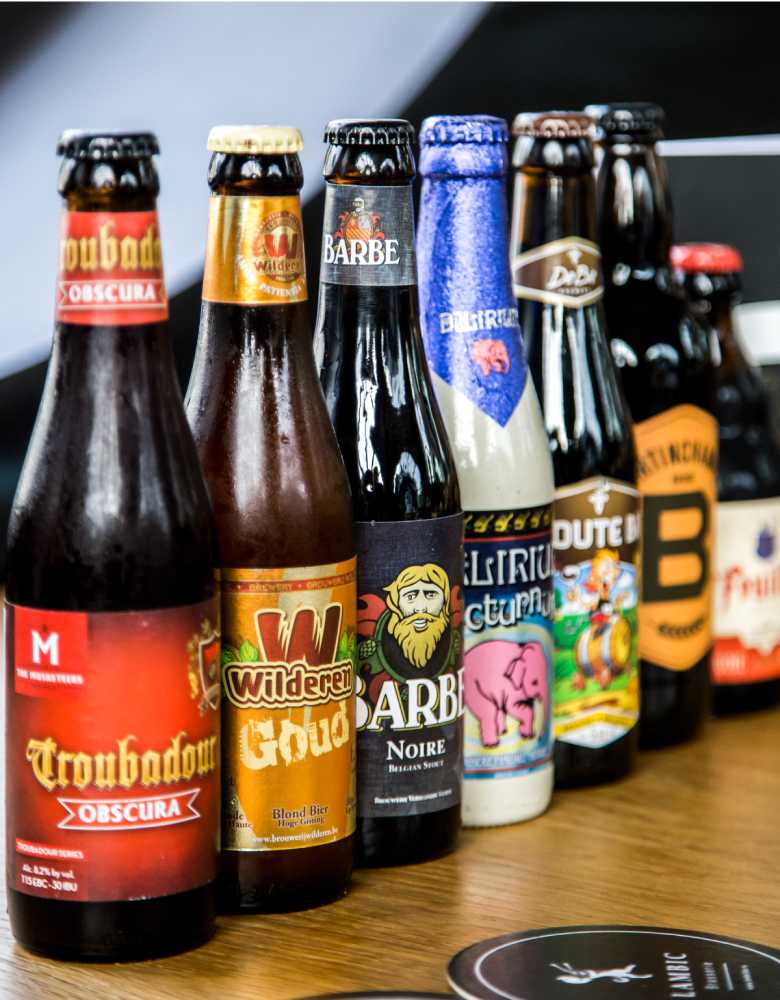
History of the origin of beer: all the most interesting things about the favorite drink
In recent years, the number of breweries, specialty stores, and beer restaurants has increased dramatically, and so many people think that beer is a symbol of modernity. Although in fact beer is considered the most ancient alcoholic drink in the world - the first traces of its production were found in a cave in Israel, and they are at least 13 thousand years old. There is a whole theory that man began to grow crops not for the production of bread, but for beer. Whether this is true or not is impossible to prove, but it is far from being the only interesting fact in the rich history of beer. From the ancient to the modern It is believed that the first industrial production of beer started as early as VII millennium B.C.! This is confirmed by clay tablets found in ancient Mesopotamia, which depict a brewing vat and masters engaged in making the drink. Of course, at that time beer was not brewed according to modern recipes: spelt and barley, as well as various spices were used for it. In the history of ancient Babylon, beer can be found in the laws, and quite severe ones at that - for example, the producer could be punished by death for a bad quality of the drink. In ancient Egypt, beer was also very popular - about 20 different recipes were used there. The ancient Romans, on the other hand, considered beer a "barbarian drink" because it was used by Celts, Germans and other European tribes who were at war with the legions. In the Middle Ages the center of beer production was the lands of Germany and Flanders. Drinks were usually brewed in monasteries, and some recipes have survived to this day, such as the famous Trappist beer, which is considered one of the symbols of modern Belgium. In those days, even children drank beer because the area was unhygienic, the quality of water was poor, and substitutes like milk deteriorated quickly. In Russia, beer has also been appreciated since ancient times. For example, in ancient Russia it was often found at princes' feasts. It was brewed from wild honey, which was considered a rather scarce commodity, and to make it cheaper, hops began to be added to it over time. Among the Russian tsars, Peter I was especially fond of beer, and other rulers followed him - for example, under Catherine II the first brewery in the country was built. Today in Russia and all over the world there are hundreds of such enterprises - from huge companies to tiny craft breweries. But one thing is unchanged: beer is still at the peak of popularity, and first of all - and we are only talking about quality beverages - because of its excellent taste. Come to Lambic and taste it for yourself!
29 March 2021
